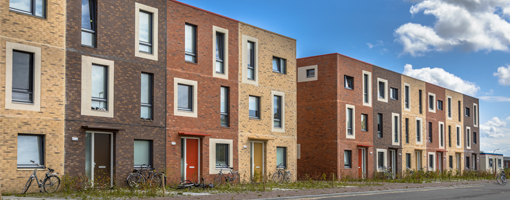Swedish scheme KPA Pension aims to create concrete improvements to close the gap between the genders in pensions created by lower wages for women.
KPA has suggested four solutions for equal pensions, as 80 per cent of its customers are women who work in occupations where the majority of employees are women, often in professions with lower salaries than occupations where the majority are men.
The pension fund suggests that men should take on half of the responsibility for caring for children, home and family, taking the same amount of parental leave, part-time work and sick-days. In addition, women should receive higher salaries even for those whose job is to care for children and the elderly.
In addition, public pensions should be raised and more women start saving privately and that the state matches their private pension savings.
CEO of KPA Britta Burreau said: “We cannot solve the fact that women receive 4.3 per cent lower salaries than men or that women to a greater extent take out parental leave and work part-time. But we can tell our customers what effect different choice3s make on the pension, so that they can make conscious decisions.”
After a meeting with pension experts and ombudsmen, Burreau said the industry might not be aware of the bearing an unequal labour market has on pensions.
“One might have the impression that it is moving in the right direction but in that case you has to open your eyes to the fact that it will only be in 2070 that women and men receive equal pensions, following today’s pace. It is unfair that it will be today’s 13 year-olds who will receive equal pensions,” she said.
Women in Sweden receive about SEK 5,400 (€519) less than men in pension payments every month as a result of an uneven working life, according to KPA.
Burreau said in order to address the issue, Sweden’s Minister for Social Security Annika Strandhäll needs to take the initiative for the state to match the individuals' private pension savings as they do in Germany.
“In addition, the old-age pension contribution needs to be restored to its original level of 18.5 per cent. Instead, 17.21 per cent is used today for tax reasons. It would increase the pension by SEK 1,400 (€135) per month for an average employee.
“You need to increase gender equality in working life and in women-dominating professions so that women get equal and higher pay. Although we through our size and our influence on decision-makers can bring forward arguments and think about issues that affect our 1.8 million customers, it is together we create the conditions for a good pension,” Burreau said.
Latest News
-
PensionsEurope stresses importance of secure retirement outcomes in switch from DB to DC
-
EIOPA has built pilot pension dashboards to test system – Hielkema
-
Irish Pensions Awards 2024 open for entries
-
Norway’s GPFG remains Europe’s largest investor in coal
-
DRV reiterates July pension raise and improves disability coverage
-
‘Vast majority’ of Finnish pensions invested responsibly - Tela
Podcast: The benefits of private equity in pension fund portfolios

The outbreak of the Covid-19 pandemic, in which stock markets have seen increased volatility, combined with global low interest rates has led to alternative asset classes rising in popularity. Private equity is one of the top runners in this category, and for good reason.
In this podcast, Munich Private Equity Partners Managing Director, Christopher Bär, chats to European Pensions Editor, Natalie Tuck, about the benefits private equity investments can bring to pension fund portfolios and the best approach to take.
In this podcast, Munich Private Equity Partners Managing Director, Christopher Bär, chats to European Pensions Editor, Natalie Tuck, about the benefits private equity investments can bring to pension fund portfolios and the best approach to take.
Podcast - The power of three: Using Common Contractual Funds to improve tax outcomes for investors

Large asset owners are still investing in equities in a way where they are taxed on their income. The implication is that they get a poorer return. They need to, and can, improve this, but how?
In this podcast, AMX Head of Client and Manager Development, Aaron Overy, and AMX Product Tax Specialist, Kevin Duggan, discuss with European Pensions Editor, Natalie Tuck, about three options to help ensure good withholding tax outcomes for institutional investors.
In this podcast, AMX Head of Client and Manager Development, Aaron Overy, and AMX Product Tax Specialist, Kevin Duggan, discuss with European Pensions Editor, Natalie Tuck, about three options to help ensure good withholding tax outcomes for institutional investors.
Mitigating risk
BNP Paribas Asset Management’s head of pension solutions, Julien Halfon, discusses equity hedging with Laura Blows
© 2019 Perspective Publishing Privacy & Cookies









Recent Stories